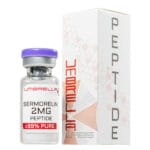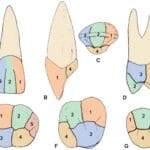So, you’ve discovered termites. It’s unsettling, but manageable. This guide covers everything you need to know about tenting your home for drywood termites, from why it’s necessary to finding the right exterminator. We’ll explore the process, preparations, costs, and even eco-friendly options, empowering you to make informed decisions and reclaim your termite-free home.
Understanding the Need for Tenting
Drywood termites can silently inflict substantial damage. While localized treatments might suffice for minor infestations, tenting, or fumigation, is often the most effective solution for widespread problems. Think of it as a deep clean for your home, eradicating termites, eggs, and larvae in every nook and cranny, even hard-to-reach areas within the wood. This comprehensive approach protects your investment by eliminating the entire colony and preventing further structural damage. Tenting may also be necessary if termites are suspected in inaccessible areas.
Deciphering the Tenting Process
The tenting process may seem daunting, but it’s a structured procedure designed for maximum effectiveness and safety:
1. Preparing Your Home
This is the most labor-intensive step. Imagine preparing for an extended camping trip:
- Food Removal: Remove all food items, including canned goods, spices, and sealed containers.
- Secure Remaining Items: Seal non-food items in plastic sheeting or bags.
- Open Sealed Items: Open mattresses, packaged furniture, and other sealed items for fumigant penetration.
- Relocate Sensitive Items: Remove plants, medications, photos, and other sensitive items.
- Arrange Temporary Housing: Secure accommodations for your family, pets, and yourself (typically 2-3 days). For assistance during this time, consider resources like Hokes Bluff Funeral Home for compassionate support.
2. Erecting the Tent
Professional fumigators will encapsulate your house with heavy-duty, typically vinyl-coated, tarps. These create a sealed environment, ensuring the fumigant remains contained and performs effectively.
3. Fumigation
Once sealed, the fumigant, a gas designed to eliminate termites (often sulfuryl fluoride), is released. This gas permeates the structure, targeting termites at every stage of life.
4. Aeration
After the required exposure time (24-72 hours, depending on temperature and fumigant type), the tent is removed, and the house is thoroughly aerated. This allows the fumigant to dissipate, making it safe for your return.
5. Post-Treatment Inspection
A qualified exterminator will conduct a thorough inspection after aeration to confirm termite elimination. They’ll also address any remaining concerns and suggest preventative measures.
Estimating the Cost of Tenting
Tenting costs vary based on several factors, including house size, infestation severity, and location. It’s wise to obtain multiple quotes from reputable exterminators to compare prices and services. Consider this an investment protecting your home from costly future damage. Also, compare fumigation costs with other termite treatment options (spot treatments, bait systems) to make informed decisions.
Exploring Alternatives to Tenting
While tenting is often the most effective solution for widespread drywood termite infestations, other options exist:
- Spot Treatments: Target localized infestations.
- Bait Systems: Lure termites to poisoned bait, which they carry back to the colony.
- Heat Treatments: Raise the temperature of the infested area to lethal levels for termites.
A qualified exterminator can help determine the most appropriate course of action.
Finding a Reputable Exterminator
Choosing the right exterminator is crucial. Look for:
- Experience: A proven track record of successful termite treatments.
- Licensing and Insurance: Ensures they adhere to industry standards and protects you from liability.
- Transparency: Willingness to answer your questions thoroughly and explain the process in detail.
- Reputation: Seek recommendations, read online reviews, and ask about their safety procedures.
Frequently Asked Questions
| Question | Answer |
|---|---|
| How long will I need to be out of my home? | Typically 2-3 days, but your exterminator will provide specific instructions. |
| Is termite tenting safe? | Yes, when performed by trained professionals following strict safety protocols. |
| What about my pets and plants? | They must be temporarily relocated during fumigation. |
| What if the termites return? | Your exterminator should discuss preventative measures and may offer warranties. |
Prioritizing Eco-Friendly Options
Some fumigants, like sulfuryl fluoride, are considered more environmentally friendly. Discuss eco-friendly options with your exterminator.
Implementing Long-Term Prevention
After fumigation, prioritize preventative measures: regular inspections, preventative wood treatments, and moisture control. Like regular car maintenance, preventative care can prevent future infestations.
Addressing Health and Safety Concerns
Professional exterminators follow strict safety guidelines to minimize risks. If you have allergies or sensitivities, communicate these concerns to your exterminator.
Does Tenting a House Kill Termites?
Yes, tenting (fumigation) is highly effective in eliminating drywood termites, including eggs and larvae. It uses a gas, usually sulfuryl fluoride, that penetrates the wood. However, tenting isn’t effective against subterranean termites, which require different treatments. Preparing your home, following safety precautions, and choosing a qualified exterminator are essential.
Can I Sleep in My House After Fumigation?
No, not immediately. A waiting period, typically 72 hours for drywood termite fumigation, is necessary for the fumigant to dissipate. The exact timeframe depends on the pest and fumigant used. Proper ventilation is crucial after the waiting period, and while general cleaning is recommended, specific mandates may vary. Follow your exterminator’s instructions carefully.
How Effective Is Fumigation for Termites?
Fumigation is incredibly effective for drywood termites, eliminating entire colonies, even hidden infestations. It’s the only method guaranteeing complete eradication within a structure. The process involves preparation, tenting, fumigant release, aeration, and clearance testing. While more expensive than other treatments, fumigation’s comprehensive approach prevents costly future damage. Safety precautions are paramount, and professional execution is essential. Alternatives like localized treatments and heat treatments exist for specific situations.
- LifeVine Wine: Discover the Delicious World of Zero-Sugar Organic Wines - December 18, 2024
- Milo’s Poultry Farms Egg Recall: What Consumers Need to Know - December 18, 2024
- Pleco Lifespan: The Ultimate Guide to Maximizing Your Pleco’s Longevity - December 18, 2024














